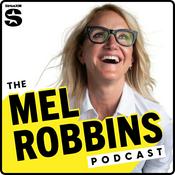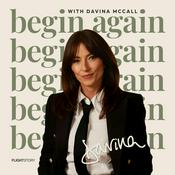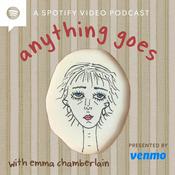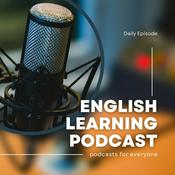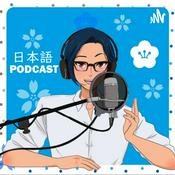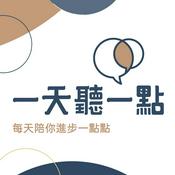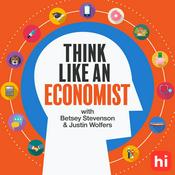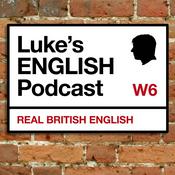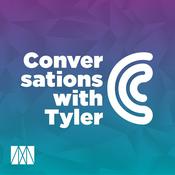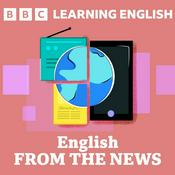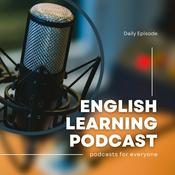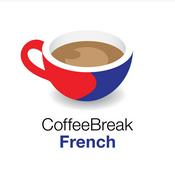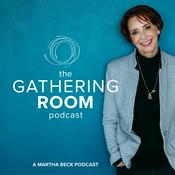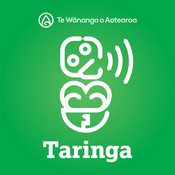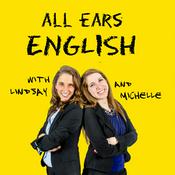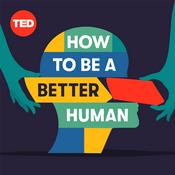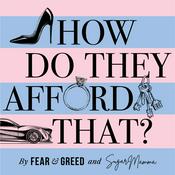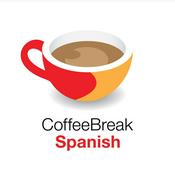364 episodes

364 | CCPT Gamechangers: How to Handle Children Who Dart Out of the Playroom
23/12/2025 | 11 mins.
In this Game Changers episode, I address one of the most stressful moments for play therapists: children who dart out of the playroom. I explain why "runners" are not a failure of the model and why a child leaving the room is sometimes developmentally, emotionally, or practically driven—not always resistance or defiance. Before jumping to limits, I emphasize the importance of understanding the why behind the behavior and responding thoughtfully rather than reactively. I also walk through concrete, practical strategies to increase safety and containment without trapping the child or violating child-centered principles. From using a spinny rolly chair and strategic positioning to recognizing when a child needs accommodation versus a limit, this episode focuses on creating barriers to unsafe behavior—not barriers to autonomy. Managing runners is about safety, attunement, and clinical judgment, and when those pieces come together, children gradually no longer need to escape the playroom. CCPT: The Field of Dreams | Live Training Event at Steinbrenner Field More Info. & Registration go to https://corewellceu.com/tampa. For more information and to register for this LIVE training event in Tampa, FL on Saturday Jan 31, 2026. PlayTherapyNow.com is my HUB for everything I do! playtherapynow.com. Sign up for my email newsletter, stay ahead with the latest CCPT CEU courses, personalized coaching opportunities and other opportunities you need to thrive in your CCPT practice. If you click one link in these show notes, this is the one to click! Topical Playlists! All of the podcasts are now grouped into topical playlists on YouTube. Please go to https://www.youtube.com/kidcounselorbrenna/playlists to view them. If you would like to ask me questions directly, check out www.ccptcollective.com, where I host two weekly Zoom calls filled with advanced CCPT case studies and session reviews, as well as member Q&A. You can take advantage of the two-week free trial to see if the CCPT Collective is right for you. Ask Me Questions: Call (813) 812-5525, or email: [email protected] Brenna's CCPT Hub: https://www.playtherapynow.com CCPT Collective (online community exclusively for CCPTs): https://www.ccptcollective.com Podcast HQ: https://www.playtherapypodcast.com APT Approved Play Therapy CE courses: https://childcenteredtraining.com Facebook: https://facebook.com/playtherapypodcast Common References: Cochran, N., Nordling, W., & Cochran, J. (2010). Child-Centered Play Therapy (1st ed.). Wiley. VanFleet, R., Sywulak, A. E., & Sniscak, C. C. (2010). Child-centered play therapy. Guilford Press. Landreth, G.L. (2023). Play Therapy: The Art of the Relationship (4th ed.). Routledge. Landreth, G.L., & Bratton, S.C. (2019). Child-Parent Relationship Therapy (CPRT): An Evidence-Based 10-Session Filial Therapy Model (2nd ed.). Routledge. https://doi.org/10.4324/9781315537948 Benedict, Helen. Themes in Play Therapy. Used with permission to Heartland Play Therapy Institute.

363 | Reducing Attrition by Preparing Parents for Resistance
18/12/2025 | 12 mins.
In this episode, I respond to Elliott's question about children who strongly resist play therapy from the very beginning and parents who eventually give up and terminate early. I explain why early resistance is not a red flag for CCPT failure, but often a clear indicator of high anxiety, a deep need for control, and a child who desperately needs the therapeutic process. The real issue isn't the child's resistance—it's whether parents were fully prepared for it before therapy ever began. I walk through how to front-load expectations during the initial parent consultation by explaining the phases of therapy, normalizing resistance, and equipping parents with scripts for what to say and do when their child refuses to come, escalates, or tries to avoid sessions. When parents understand that giving in reinforces anxiety and avoidance, they're far more likely to stay the course. High attrition is almost always a communication problem, and when parents are prepared, children are given the consistency they need to work through their anxiety and reach natural termination. CCPT: The Field of Dreams | Live Training Event at Steinbrenner Field More Info. & Registration go to https://corewellceu.com/tampa. For more information and to register for this LIVE training event in Tampa, FL on Saturday Jan 31, 2026. PlayTherapyNow.com is my HUB for everything I do! playtherapynow.com. Sign up for my email newsletter, stay ahead with the latest CCPT CEU courses, personalized coaching opportunities and other opportunities you need to thrive in your CCPT practice. If you click one link in these show notes, this is the one to click! Topical Playlists! All of the podcasts are now grouped into topical playlists on YouTube. Please go to https://www.youtube.com/kidcounselorbrenna/playlists to view them. If you would like to ask me questions directly, check out www.ccptcollective.com, where I host two weekly Zoom calls filled with advanced CCPT case studies and session reviews, as well as member Q&A. You can take advantage of the two-week free trial to see if the CCPT Collective is right for you. Ask Me Questions: Call (813) 812-5525, or email: [email protected] Brenna's CCPT Hub: https://www.playtherapynow.com CCPT Collective (online community exclusively for CCPTs): https://www.ccptcollective.com Podcast HQ: https://www.playtherapypodcast.com APT Approved Play Therapy CE courses: https://childcenteredtraining.com Facebook: https://facebook.com/playtherapypodcast Common References: Cochran, N., Nordling, W., & Cochran, J. (2010). Child-Centered Play Therapy (1st ed.). Wiley. VanFleet, R., Sywulak, A. E., & Sniscak, C. C. (2010). Child-centered play therapy. Guilford Press. Landreth, G.L. (2023). Play Therapy: The Art of the Relationship (4th ed.). Routledge. Landreth, G.L., & Bratton, S.C. (2019). Child-Parent Relationship Therapy (CPRT): An Evidence-Based 10-Session Filial Therapy Model (2nd ed.). Routledge. https://doi.org/10.4324/9781315537948 Benedict, Helen. Themes in Play Therapy. Used with permission to Heartland Play Therapy Institute.

362 | CCPT Gamechangers: Why Overanalyzing the Play Becomes a Therapist Trap (Symbolic Play & Themes)
16/12/2025 | 14 mins.
In this Game Changers episode, I address a pattern I've been seeing everywhere: therapists becoming overly focused on identifying, interpreting, and assigning meaning to themes and symbolic play. I explain why this pulls us out of attunement, distracts us from the child, and risks turning CCPT into an interpretive exercise rather than a relational, child-centered process. Themes can absolutely be useful—but only in the context of parent consultations. In the playroom, our job is presence, attunement, and skill execution, not analysis. I also offer a strong caution against "making leaps" or weaving narratives out of play behaviors. Children are experiential and emotional, not symbolic theorists sending coded messages. They work through what they need to work through whether we understand it or not. When our skills become automatic and our presence is grounded, we naturally begin to recognize patterns—but that awareness should never come at the cost of focusing on the child. The play is just the play; our priority is always the child, the relationship, and the process that leads to healing. CCPT: The Field of Dreams | Live Training Event at Steinbrenner Field More Info. & Registration go to https://corewellceu.com/tampa. For more information and to register for this LIVE training event in Tampa, FL on Saturday Jan 31, 2026. PlayTherapyNow.com is my HUB for everything I do! playtherapynow.com. Sign up for my email newsletter, stay ahead with the latest CCPT CEU courses, personalized coaching opportunities and other opportunities you need to thrive in your CCPT practice. If you click one link in these show notes, this is the one to click! Topical Playlists! All of the podcasts are now grouped into topical playlists on YouTube. Please go to https://www.youtube.com/kidcounselorbrenna/playlists to view them. If you would like to ask me questions directly, check out www.ccptcollective.com, where I host two weekly Zoom calls filled with advanced CCPT case studies and session reviews, as well as member Q&A. You can take advantage of the two-week free trial to see if the CCPT Collective is right for you. Ask Me Questions: Call (813) 812-5525, or email: [email protected] Brenna's CCPT Hub: https://www.playtherapynow.com CCPT Collective (online community exclusively for CCPTs): https://www.ccptcollective.com Podcast HQ: https://www.playtherapypodcast.com APT Approved Play Therapy CE courses: https://childcenteredtraining.com Facebook: https://facebook.com/playtherapypodcast Common References: Cochran, N., Nordling, W., & Cochran, J. (2010). Child-Centered Play Therapy (1st ed.). Wiley. VanFleet, R., Sywulak, A. E., & Sniscak, C. C. (2010). Child-centered play therapy. Guilford Press. Landreth, G.L. (2023). Play Therapy: The Art of the Relationship (4th ed.). Routledge. Landreth, G.L., & Bratton, S.C. (2019). Child-Parent Relationship Therapy (CPRT): An Evidence-Based 10-Session Filial Therapy Model (2nd ed.). Routledge. https://doi.org/10.4324/9781315537948 Benedict, Helen. Themes in Play Therapy. Used with permission to Heartland Play Therapy Institute.

361 | Pricing Your Practice: The Real Math Behind Free Parent Consultations
11/12/2025 | 13 mins.
In this episode, I respond to Sarah's question about how to structure and charge for parent consultations in a child-centered private practice. I explain why free parent consults are not only clinically best practice but also essential for sustaining parent engagement, maintaining buy-in throughout the 30–40-session treatment arc, and ensuring parents feel informed despite not having access to client records. I walk through how these meetings are built into your overall fee structure, how to calculate your rate so the consult hours are accounted for, and why charging separately for them can undermine trust and create ethical tension. I also clarify the real workload involved, noting that once a caseload stabilizes, consults naturally stagger rather than cluster—typically only a few per month. Finally, I share how free consults strengthen the therapeutic relationship, enhance the parent's perception of value, and counter cultural misconceptions about therapists being financially motivated. When parents feel supported, informed, and valued, they stay committed to the CCPT process, which directly impacts child outcomes. CCPT: The Field of Dreams! - Live CCPT Training in Tampa, FL Go to https://corewellceu.com/tampa. For more information and to register for this LIVE training event in Tampa, FL on Saturday Jan 31, 2026. PlayTherapyNow.com is my HUB for everything I do! playtherapynow.com. Sign up for my email newsletter, stay ahead with the latest CCPT CEU courses, personalized coaching opportunities and other opportunities you need to thrive in your CCPT practice. If you click one link in these show notes, this is the one to click! Topical Playlists! All of the podcasts are now grouped into topical playlists on YouTube. Please go to https://www.youtube.com/kidcounselorbrenna/playlists to view them. If you would like to ask me questions directly, check out www.ccptcollective.com, where I host two weekly Zoom calls filled with advanced CCPT case studies and session reviews, as well as member Q&A. You can take advantage of the two-week free trial to see if the CCPT Collective is right for you. Ask Me Questions: Call (813) 812-5525, or email: [email protected] Brenna's CCPT Hub: https://www.playtherapynow.com CCPT Collective (online community exclusively for CCPTs): https://www.ccptcollective.com Podcast HQ: https://www.playtherapypodcast.com APT Approved Play Therapy CE courses: https://childcenteredtraining.com Facebook: https://facebook.com/playtherapypodcast Common References: Cochran, N., Nordling, W., & Cochran, J. (2010). Child-Centered Play Therapy (1st ed.). Wiley. VanFleet, R., Sywulak, A. E., & Sniscak, C. C. (2010). Child-centered play therapy. Guilford Press. Landreth, G.L. (2023). Play Therapy: The Art of the Relationship (4th ed.). Routledge. Landreth, G.L., & Bratton, S.C. (2019). Child-Parent Relationship Therapy (CPRT): An Evidence-Based 10-Session Filial Therapy Model (2nd ed.). Routledge. https://doi.org/10.4324/9781315537948 Benedict, Helen. Themes in Play Therapy. Used with permission to Heartland Play Therapy Institute.

360 | CCPT Gamechangers: "Mom Said I'm Supposed To…" What You Do Next Matters
09/12/2025 | 12 mins.
In this Game Changers episode, I tackle a common but tricky moment in the playroom—when a child walks in and says, "Mom said I'm supposed to…" or repeats a parent's explanation for why they're in therapy. I explain why this creates an immediate rupture in child-centeredness and how it threatens the therapist–child relationship by signaling that the therapist and parent are aligned in an agenda. I walk through exactly what to say in the moment, how to reflect content while reaffirming the child's freedom, and how to redirect the session back to CCPT principles without shaming or correcting the parent. I also break down the broader prevention strategy: giving parents a specific script before therapy begins so they don't unintentionally introduce pressure, expectations, or agenda into the process. When parents go off-script—which they will—I explain how to address it gently with the child and directly with the parent, and how to provide the deeper "why" behind CCPT so parents feel reassured rather than dismissed. This is a subtle but powerful game changer: learning to protect the therapeutic relationship, maintain child-centeredness, and support parents' fears all at once. CCPT: The Field of Dreams! Go to https://corewellceu.com/tampa. For more information and to register for this LIVE training event in Tampa, FL on Saturday Jan 31, 2026. PlayTherapyNow.com is my HUB for everything I do! playtherapynow.com. Sign up for my email newsletter, stay ahead with the latest CCPT CEU courses, personalized coaching opportunities and other opportunities you need to thrive in your CCPT practice. If you click one link in these show notes, this is the one to click! Topical Playlists! All of the podcasts are now grouped into topical playlists on YouTube. Please go to https://www.youtube.com/kidcounselorbrenna/playlists to view them. If you would like to ask me questions directly, check out www.ccptcollective.com, where I host two weekly Zoom calls filled with advanced CCPT case studies and session reviews, as well as member Q&A. You can take advantage of the two-week free trial to see if the CCPT Collective is right for you. Ask Me Questions: Call (813) 812-5525, or email: [email protected] Brenna's CCPT Hub: https://www.playtherapynow.com CCPT Collective (online community exclusively for CCPTs): https://www.ccptcollective.com Podcast HQ: https://www.playtherapypodcast.com APT Approved Play Therapy CE courses: https://childcenteredtraining.com Facebook: https://facebook.com/playtherapypodcast Common References: Cochran, N., Nordling, W., & Cochran, J. (2010). Child-Centered Play Therapy (1st ed.). Wiley. VanFleet, R., Sywulak, A. E., & Sniscak, C. C. (2010). Child-centered play therapy. Guilford Press. Landreth, G.L. (2023). Play Therapy: The Art of the Relationship (4th ed.). Routledge. Landreth, G.L., & Bratton, S.C. (2019). Child-Parent Relationship Therapy (CPRT): An Evidence-Based 10-Session Filial Therapy Model (2nd ed.). Routledge. https://doi.org/10.4324/9781315537948 Benedict, Helen. Themes in Play Therapy. Used with permission to Heartland Play Therapy Institute.
More Education podcasts
Trending Education podcasts
About Play Therapy Podcast: A Master-Class in Child-Centered Play Therapy
Listen to Play Therapy Podcast: A Master-Class in Child-Centered Play Therapy, The Mel Robbins Podcast and many other podcasts from around the world with the radio.net app
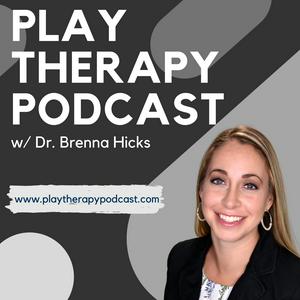
Get the free radio.net app
- Stations and podcasts to bookmark
- Stream via Wi-Fi or Bluetooth
- Supports Carplay & Android Auto
- Many other app features
Get the free radio.net app
- Stations and podcasts to bookmark
- Stream via Wi-Fi or Bluetooth
- Supports Carplay & Android Auto
- Many other app features


Play Therapy Podcast: A Master-Class in Child-Centered Play Therapy
download the app,
start listening.
